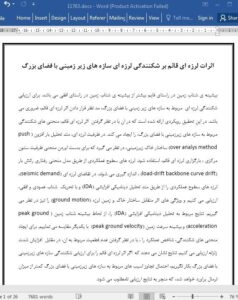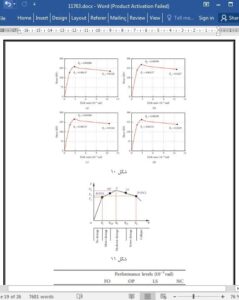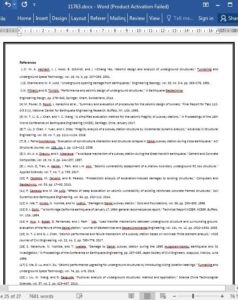The measured vertical peak ground acceleration was larger than the horizontal peak ground acceleration. It is essential to consider the vertical seismic effect in seismic fragility evaluation of large-space underground structures. In this research, an approach is presented to construct fragility curves of large-space underground structures considering the vertical seismic effect. In seismic capacity, the soil-underground structure pushover analysis method which considers the vertical seismic loading is used to obtain the capacity curve of central columns. The thresholds of performance levels are quantified through a load-drift backbone curve model. In seismic demand, it is evaluated through incremental dynamic analysis (IDA) method under the excitation of horizontal and vertical acceleration, and the soil-structure-interaction and ground motion characteristics are also considered. The IDA results are compared in terms of peak ground acceleration and peak ground velocity. To construct the fragility curves, the evolutions of performance index versus the increasing earthquake intensity are performed, considering related uncertainties. The result indicates that if we ignore the vertical seismic effect to the fragility assessment of large-space underground structures, the exceedance probabilities of damage of large-space underground structures will be underestimated, which will result in an unfavorable assessment result.
1. Introduction
Large-space underground structures such as subway stations, commercial streets, and parking lots are wildly used urban construction measures. These structures can suffer severe damage under strong ground shaking [1, 2]. Especially for shallow embedded structures in soft soil, their susceptibility to damage can be increased, due to ground strain and velocity along with acceleration increase when approaching the ground surface [3, 4]. In addition, for some early built large-space underground structures, they are facing a high potential risk of seismic damage due to without properly considering seismic design. Consequently, to ensure the seismic safety of large-space underground structures, especially in seismic prone areas, the seismic fragility assessment is introduced to large-space underground structures by different researchers.
4. Conclusions
An approach is proposed to construct fragility curves for large-space underground structures considering the vertical seismic effect. Thresholds of performance levels are obtained based on the soil-underground structure pushover analysis method, which considers the contribution of vertical seismic effect to seismic capacity. The seismic demand of the large-space underground structure is evaluated through 3D incremental dynamic analyses, accounting for soil inelasticity and ground motion characteristics. Based on a selected typical large-space underground structure, this approach is applied to the derivation of seismic fragility curves of different sites, accounting for soil-underground structure interaction. The fragility curves are compared, highlighting the important role of site and the vertical seismic effect in the vulnerability of large-space underground structures.











